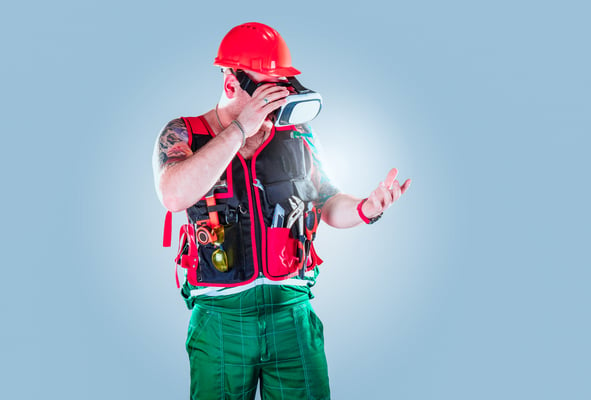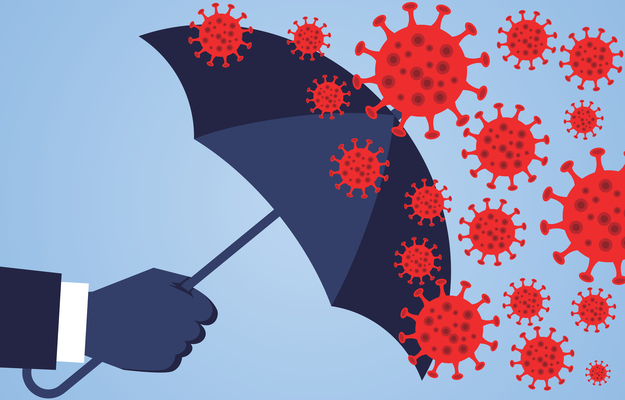Will There Be a Second Wave of COVID-19? How Contractors Can Prepare

The coronavirus outbreak has disrupted most business sectors, including construction. Business activity will gradually resume, as governments lift their restrictions and stay-at-home orders. However, some experts believe there could be a second wave of COVID-19, and construction firms should have a strategy in place. Even if there is no second wave, companies can take measures to become more resilient against future pandemics.
Architecture, engineering, and construction firms can reduce the risk of coronavirus infection with a combination of safety protocols and technology. COVID-19 also has legal implications in the construction sector, since the disease is not addressed directly in many contracts. In addition, the coverage of many insurance plans is not clear for coronavirus-related losses.
Manage your construction project efficiently, and meet COVID-19 prevention protocols.
Some construction projects are considered critical: they have been allowed to continue during the COVID-19 outbreak, under stringent safety protocols. Therefore, coronavirus prevention measures are already in high demand.
Combining Safety Protocols with Jobsite Technology
Working from home is one of the most effective measures against COVID-19, for the simple reason that employees are not interacting in person. Construction projects can be designed and approved with remote collaboration, but contractors and their staff must be physically present to continue beyond this point.
Even during the construction stage, working from home is possible for many roles. A learning curve can be expected, since this may be the first experience with remote collaboration for some staff members. However, the safety benefits of working from home far outweigh the management challenges that come with the transition.

Social distancing measures and personal protective equipment (PPE) can be applied in construction sites. However, construction workers must stand close to each other for some tasks, making social distancing impossible.
- Workers must rely on PPE in these cases, but construction managers can also limit the number of people in a specific area.
- Project schedules can also be edited so crews work at different hours, lowering the risk of COVID-19 transmission even more.
Wearable technology has promising applications in construction sites. Workers can wear sensors that detect if they are not keeping a safe distance, and they can be warned immediately with audiovisual signals.
With the data collected by wearable sensors, construction managers can also identify which activities make social distancing difficult. They can reschedule these activities or change their layout to minimize COVID-19 risks. For example, they can designate one-way routes to minimize frontal interaction between workers.
Construction firms can also deploy supervision drones and 360° cameras to monitor project sites with minimal interaction. For example, supervisors can fly a drone through a construction site instead of conducting a walk-through inspection. Infrared sensors at project accesses can also detect workers with a fever, screening COVID-19 cases more effectively. Not everyone develops a fever when exposed to the virus, but fever is a warning site of potential cases.
Addressing COVID-19 in Contracts and Insurance Plans

The coronavirus outbreak has created new responsibilities and costs in construction projects. Ideally, these issues should be resolved in a friendly manner between owners and contractors, but some cases can lead to litigation. To prevent legal conflicts associated with COVID-19, the best solution is to cover them explicitly in contracts moving forward.
Construction contracts should now include specific provisions for coronavirus, such as mandatory safety protocols. In existing contracts, coronavirus may be covered by force majeure clauses with broad definitions. Specific definitions may exclude coronavirus, even if the disease was not mentioned by name when the contract was written.
Insurance coverage can also fall in a grey area with respect to COVID-19.
- Some insurance plans exclude viruses and other infectious diseases explicitly, but others are not so clear.
- General liability insurance may cover a contractor if someone from his staff gets infected due to negligence by a third party.
- Contractors should keep track of all official communication from state governments, since they may introduce mandatory coverage for some COVID-19 issues.
- Pandemics are normally excluded from business interruption coverage. However, companies may be eligible if there has been physical damage, such as a fire.
Keeping workers healthy should be a top priority for all companies. This is the socially responsible thing to do, and it can also spare them from legal and financial issues. The public image of a company can also be hurt severely if it allows an internal COVID-19 outbreak.
Note: At NY Engineers we are not experts in legal advice and project insurance. This section is intended as a general outlook, not as direct professional advice.

Michael Tobias
Michael Tobias, the Founding Principal of NY Engineers, currently leads a team of 150+ MEP/FP engineers and has led over 4,000 projects in the US
Join 15,000+ Fellow Architects and Contractors
Get expert engineering tips straight to your inbox. Subscribe to the NY Engineers Blog below.

